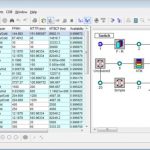
Using RBDs to model different systems and circumstances
In the previous post, the basics of a Reliability Block Diagram were covered using simple Series or Parallel paths. In real life, most systems or processes are not that simple and require a different level or type of models, often used in combination with other types.
So in our continued exploration of RBDs, let’s explore a few different models that may be used. [Read more…]













 Ask a question or send along a comment.
Please login to view and use the contact form.
Ask a question or send along a comment.
Please login to view and use the contact form.